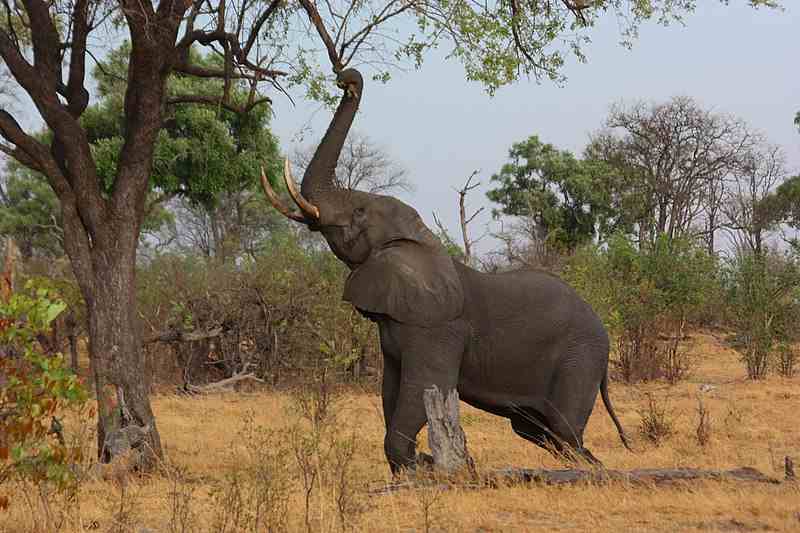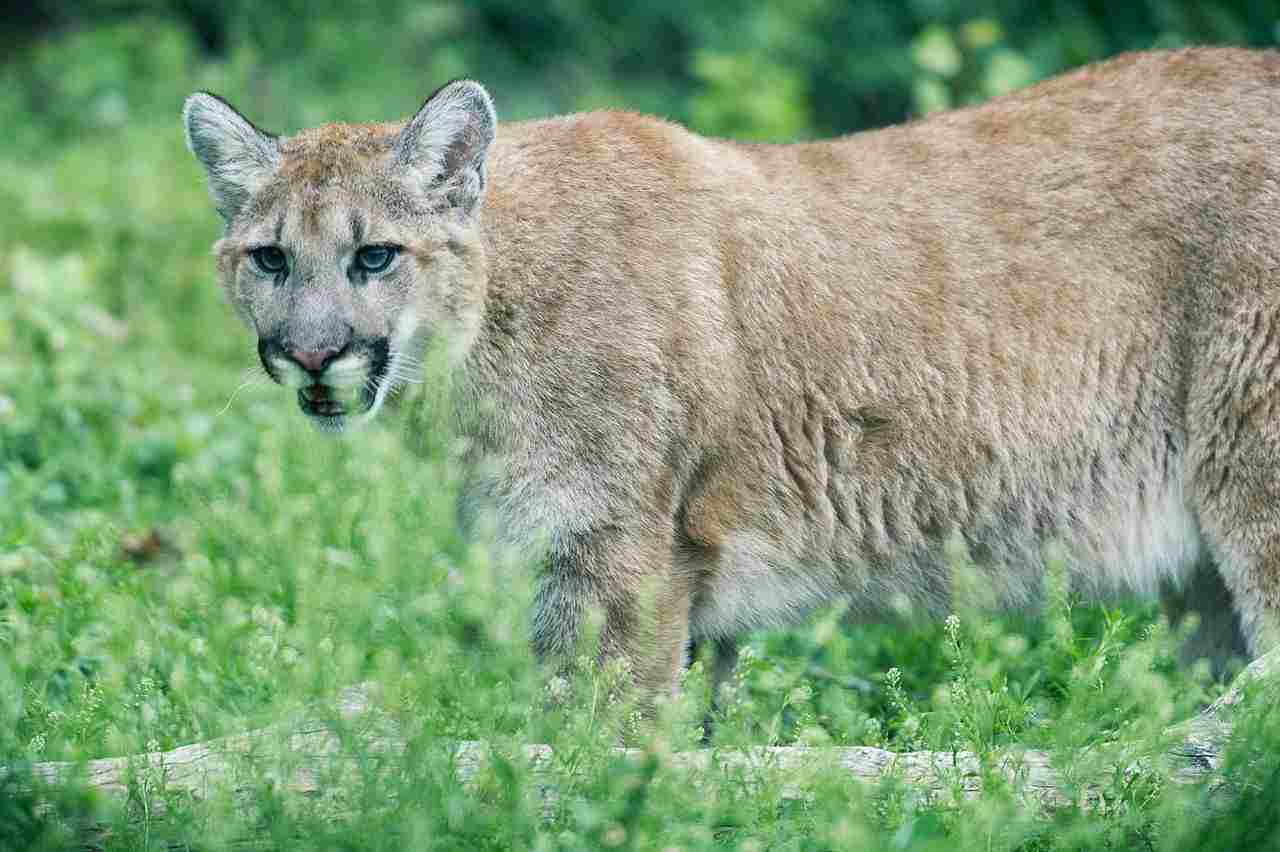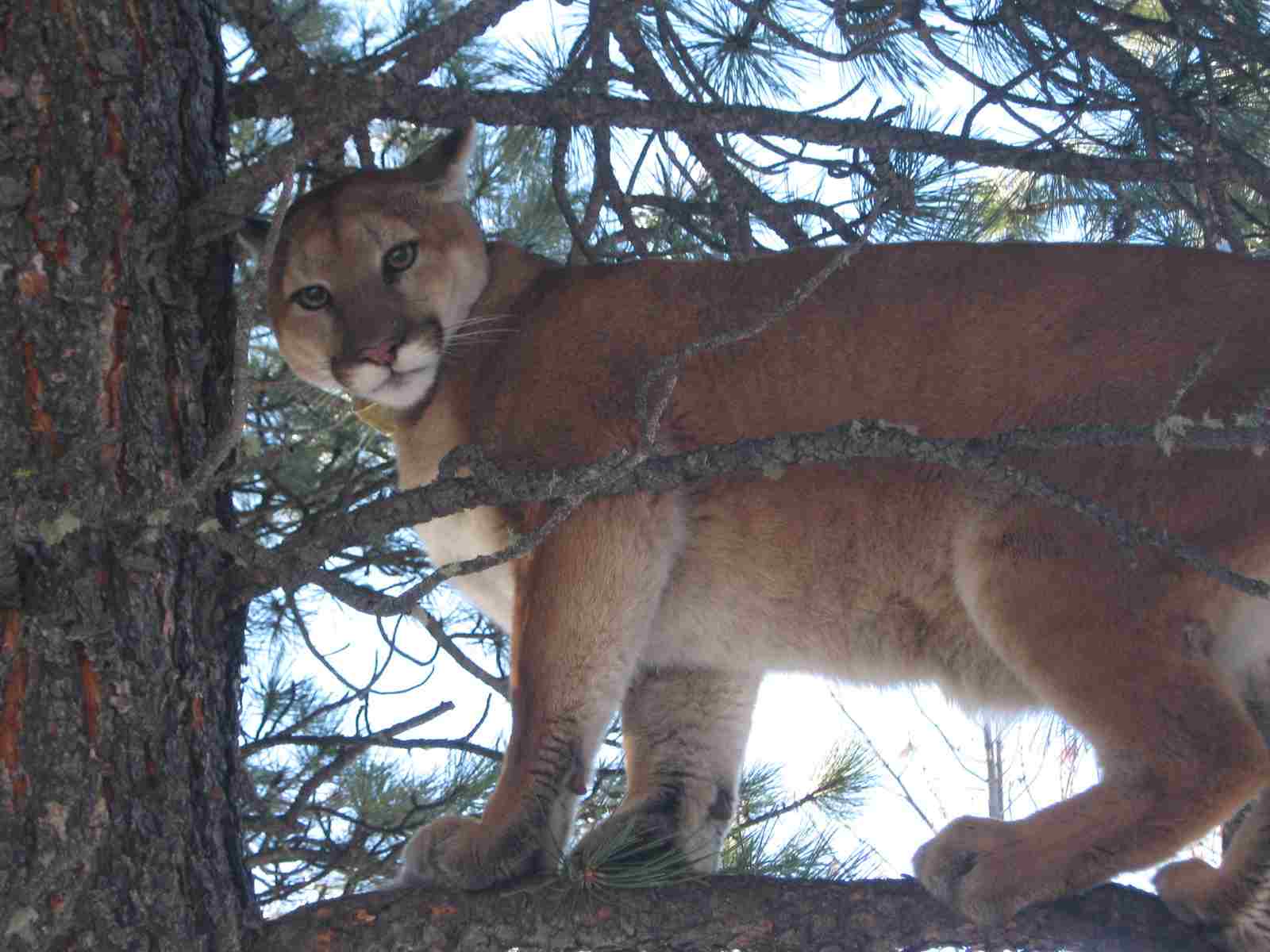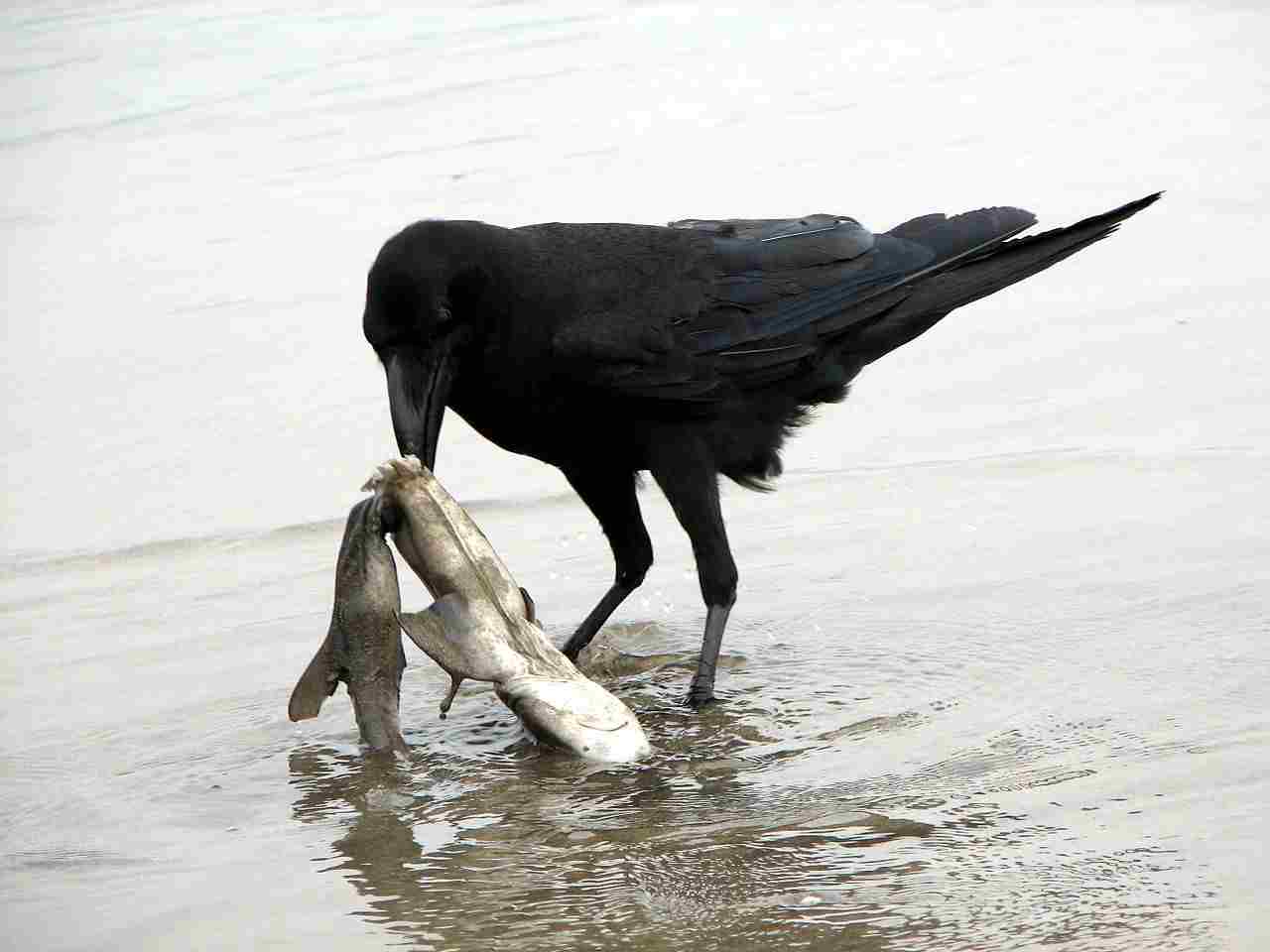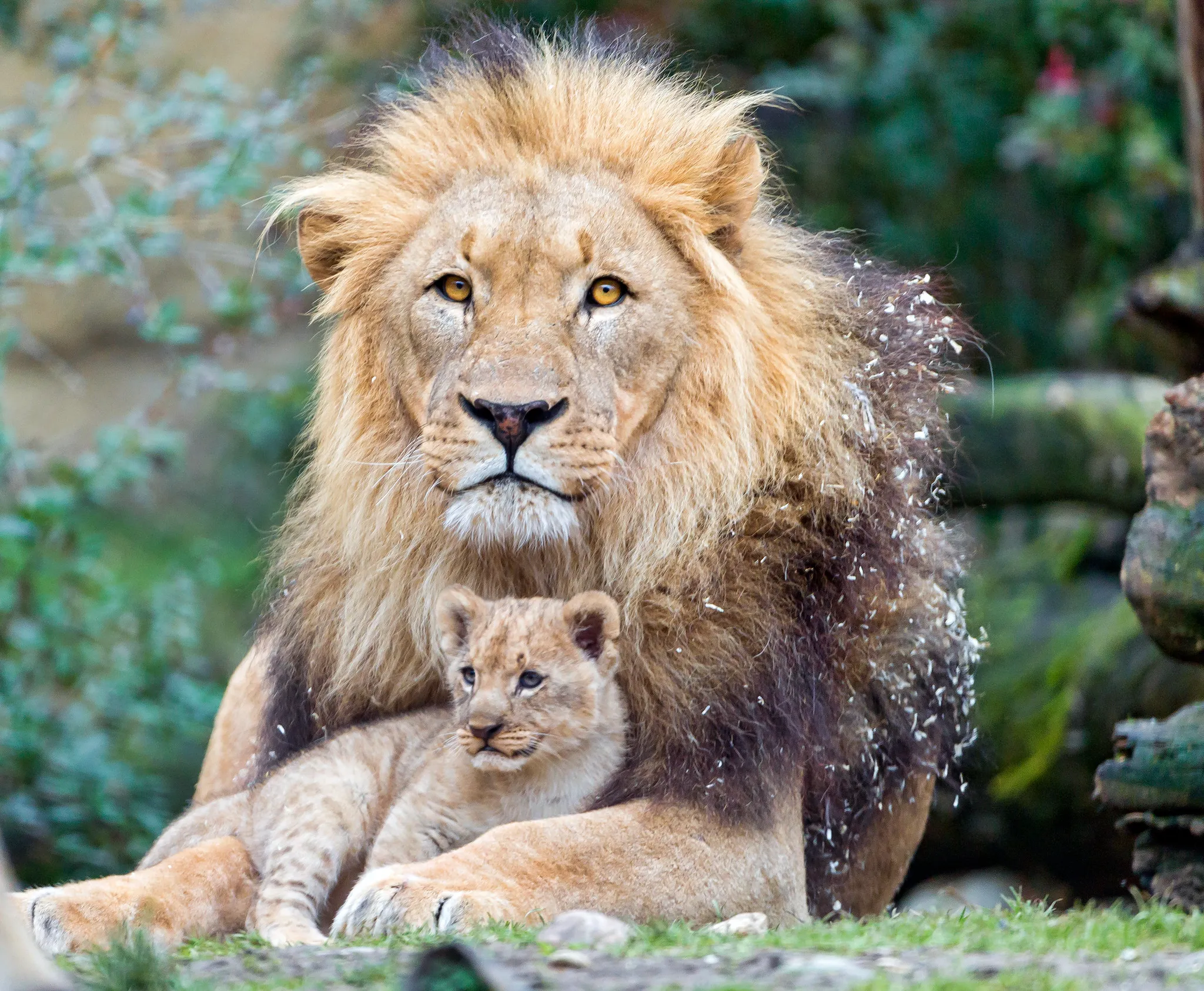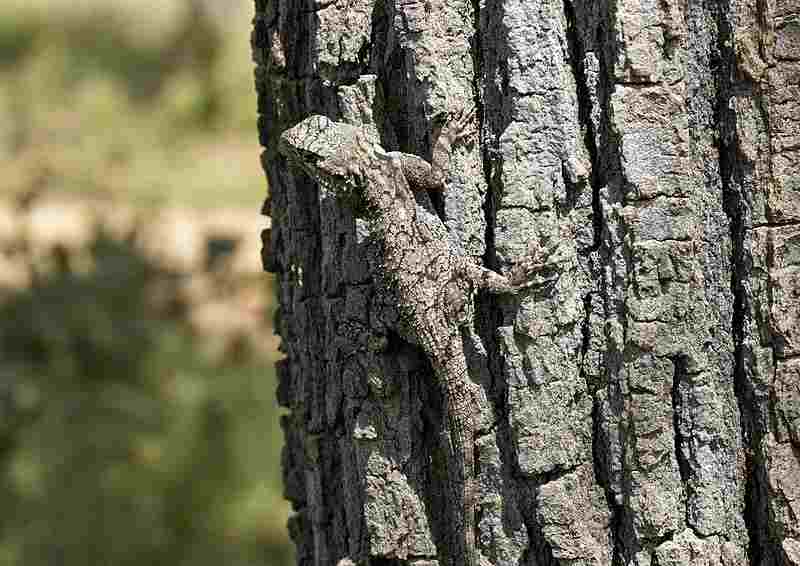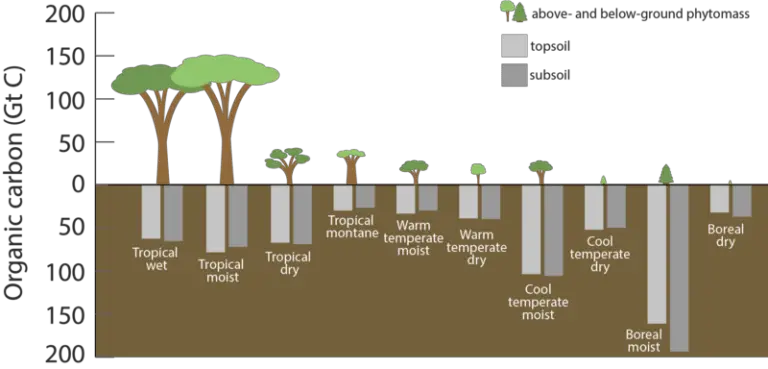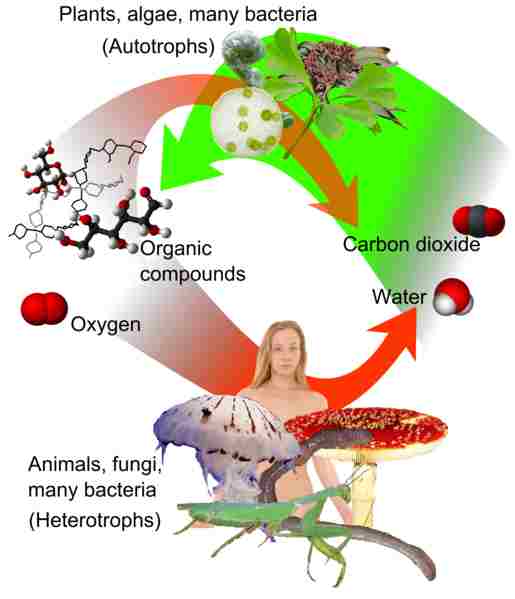Animals in the Savanna Ecosystem and Their Characteristics Discussed
Animals in the savanna are; small mammalian herbivores like springhare; large mammalian herbivores like buffalo; small mammalian carnivores like civet; large mammalian carnivores like lion; insects like beetle; birds like ostrich; as well as reptiles and amphibians.
Along with plants, they constitute the main biotic factors in savanna ecoregions.
This article discusses animals in the savanna and their attributes, as follows;
1). Small Mammalian Herbivores (as one of the groups of Animals in the Savanna)
Small mammalian herbivores are a major group of animals in the savanna ecosystem.
These animals play an important role toward the sustainability of their environment through their feeding activities that include the consumption of various forms of plant biomass.
Adaptations of small mammalian herbivores in the savanna enable them to feed on savanna plants including grasses, shrubs, forbs and herbs [1].
Because of their herbivorous habits, these animals can be classified as primary consumers in the savanna food chain. They serve as prey for animals in higher trophic levels, including small and large carnivores; while influencing the pattern of growth, regeneration, and adaptation of savanna plants.
Examples of small (and medium-sized) herbivorous mammals in the savanna are; rock hyrax (Procavia capensis), dik-dik (Madogua spp.), Impala (Aepyceros melampus), and rodents like the springhare (Pedetes capensis).
*Rock Hyrax
Rock hyrax is a small mammal with predominantly-herbivorous feeding habits. Their diet includes plant materials like fruits, shoots and leaves. They may also exhibit omnivorous tendencies, by consuming insects, bird-eggs, and small reptiles.
Through their feeding activities, rock hyraxes contribute to seed dispersal and plant regeneration in the savanna. They are known for their distinctive vocalizations, which are used for communication and breeding purposes.

*Dik-dik
Dik-dik is a small-sized antelope occurring the African savanna.
Food for this herbivore comprises of flowers, fruits and leaves of both trees and shrubs.
In addition to its herbivorous digestive-adaptation, the dik-dik is capable of surviving on moisture from ingested plant matter; which enables them tolerate semi-arid conditions that are especially prevalent in the dry season. Like rock hyrax, they facilitate the dispersal of seeds through their feeding and excretion.
*Impala
Impala is a medium-sized antelope that lives in the savanna region of Africa. Its primary food source is grass, and it plays a role in regulating the growth, areal dispersal and adaptive evolution of grasses within its territory.
*Springhare
The springhare is one of numerous grassland rodents with herbivorous feeding habits.
It is nocturnal and may be found in African savannas, alongside other herbivores like the impala.
Features of this animal include digestive adaptations for plant consumption, color camouflage, and powerful hind limbs to elude predators.
Their food consists of materials like herbaceous shoots, leaves and grasses. Springhares are essential as both consumer and food source, and serve as mutual prey for various predators across the food web of savanna ecosystems.
Small herbivores generally contribute to plant speciation, soil conservation and nutrient-recycling in the ecosystem.
Their role as prey to carnivorous consumers implies that they are essential to the survival of savanna carnivores, and, by inference, to the continuity of the terrain in which they occur.
2). Large Mammalian Herbivores
The large mammalian herbivores are plant-eating mammals that exceed the small and medium categories in size.
They are useful to the savanna ecosystem, as facilitators of energy-transfer, eco-structural management and evolution.
Like their smaller colleagues, the large mammalian herbivores have adaptive features that enable them to consume shrubs and grasses, among other types of vegetative material. This feeding habit helps to distribute plants and increase diversity.
Examples of large mammalian herbivores in the savanna are; the African elephant (Loxodonta africana), African buffalo (Syncerus caffer), hippopotamus (Hippopotamus amphibius), and giraffe (Giraffa camelopardalis).
*African Elephant
The African elephant is considered to be the largest terrestrial mammal on Earth [2].
In the savanna, African elephants may consume various plant materials including bark, leaves, fruits and grasses.
Due to their size, these mammals can significantly impact vegetation growth within their territory. They consume large amounts of vegetation, causing major changed to growth structures in the process, while also aiding in seed dispersal that leads to regeneration of consumed plants.

*African Buffalo
African buffalo is another well-known, large mammalian herbivore that is found in the savanna.
They survive by consuming twigs and leaves of trees and shrubs, as well as grazing on grasses.
Part of their adaptive behavior to elude predators is herding, whereby they move in large numbers and graze in open, vast grassland.
As one of the most dominant grazers, the African buffalo strongly influences plant growth-patterns and distribution.
*Hippopotamus
Another large herbivorous mammal in the savanna is the hippopotamus.
This mammal prefers the humid extremes of the savanna, which are geographically closer to tropical rainforest zones than deserts. Much of their day is spend within or around aquatic micro-habitats like rivers, swamps, lakes and ponds.
Food for the hippopotamus includes grasses and other types of vegetation in its surrounding.
*Giraffe
The long-necked giraffe is a browser; meaning that it prefers to feed on vegetation at significant height in tall plants like the Acacia tree [3].
Giraffes are selective feeders whose activities influence the heights of savanna trees and shrubs, as well as their branch-and-canopy morphology.
In general, roles played by large herbivores in the savanna are;
1. Seed dispersal
2. Micro-habitat modification
3. Plant speciation and adaptation
4. Cycling of nutrients
5. Food provision for carnivores
These roles are played in the process of grazing, vegetation-trampling, and excretion among other activities.
3). Small Mammalian Carnivores (as one of the groups of Animals in the Savanna)
Small mammalian carnivores in the savanna are crucial in their role as secondary consumers and predators, and contribute to ecologic equilibrium as well as continuity; by regulating the size of primary consumer-populations.
Many small carnivorous mammals are opportunistic in their approach to prey and feeding in general. This is due to the limitation of size and strength faced by such animals.
As a result, several of them tend toward omnivorous feeding, and can be found supplementing their diet with insects and plant-derived materials like fruits.
Examples of small mammalian carnivores in the savanna are; African wildcat (Felis lybica), genet (Genetta spp.), bat-eared fox (Otocyon megalotis), and African civet (Civettictis civetta).
*African Wildcat
The African wildcat is a carnivorous, small-sized mammal that is indigenous to the savanna.
Food for this animal includes primarily; birds, reptiles, insects and mammals. It may also exploit other food sources like fruits, thereby feeding omnivorously; especially in periods of prey scarcity.

*Genet
Genet is a cat-like, small mammal that feeds carnivorously and can be found in savanna eco-regions. Its diet is relatively diverse and consists of birds, insects, reptiles, insects and other small mammals like shrews and rodents [7].
Like the African wildcat, it is opportunistic and very adaptable, so that it can supplement its carnivorous diet with fruits, and can thrive in other terrestrial biomes like forests.
*Bat-Eared Fox
Bat-eared fox is another small-sized carnivorous mammal in the savanna, whose most distinctive physiological feature is its prominently-large ears.
Food for the bat-eared fox consists of insects; and it can also consume berries and fruits to supplement its diet.
*African Civet
The African civet is a small-to-medium sized carnivorous mammal with nocturnal habits that occurs in savannas and forests. It has s distinctively-marked coat and feeds chiefly on reptiles, smaller mammals (like rodents) and birds.
Like other small carnivores, it augments its diet with plant materials like berries and fruits. This enables them survive under resource-deficient conditions.

Generally, the roles played by small mammalian carnivores in the savanna include;
1. Cycling of nutrients
2. Bioenergy transfer from primary consumers to tertiary consumers (they are the secondary consumers in-between these two groups)
3. Regulation of the size of prey-populations
4. Facilitation of adaptive evolution in prey
5. Dispersal of seeds (through occasional omnivorous feeding)
6. Control of insect and rodent pests of savanna grasses, shrubs herbs and tubers
Adaptations for survival of small carnivorous mammals in the savanna include;
1. Color camouflage (for stalking prey and eluding larger predators)
2. Opportunistic feeding
3. Drought and food-scarcity tolerance
4). Large Mammalian Carnivores
Large mammalian carnivores in the savanna are tertiary consumers/apex predators, that usually occupy the highest trophic level of the food chain or energy pyramid.
As a result of their dominant trophic position, the feeding activities of these animals strongly influences the dynamics and structure of the savanna.
Examples of large carnivorous mammals in the savanna ecosystem are; African leopard (Panthera pardus), spotted hyena (Crocuta crocuta), African lion (Panthera leo), African wild dog (Lycaon pictus), and cheetah (Acinonyx jubatus).
*African Leopard
The African leopard is a highly elusive, stealthy and solitary carnivore whose habitat-range includes forests and savannas.
Attributes of the African leopard include high-adaptability, agility, and hunting prowess.
Food for this animal includes small and large herbivores like impala, monkey, warthogs, as well as small carnivores. Leopards have the habit of dragging their kill up into trees in order to protect it from fellow carnivores [5].

*Spotted Hyena
Spotted hyena is a predator whose size can be described as medium-to-large.
It feeds in a highly variable and opportunistic manner, and may hunt prey or act as a scavenger under different circumstances.
Hyenas are social and rely on numbers to take down large prey and fend-off other predators.
Features of this animal include distinctive coat-markings, powerful jaws and a well-evolved digestive system that effectively breaks down various materials including bones and carrion [8].
*African Lion
The African lion is arguably the most outstanding and well-known, large mammalian carnivore in the savanna.
Like the spotted hyena, it is a social animal and uses numbers as an advantage when hunting large prey. They are also individually powerful and skilled as hunters.
Food for the African lion includes large herbivores such as zebra and wildebeest.
*African Wild Dog
African wild dogs may best be described as medium-sized carnivores, although they exceed others like the civet, in size.
They rely on effective cooperation, communication and teamwork when hunting, and typically move in packs.
Stamina is also an advantageous attribute of this animal, which it uses to weary its prey by pursuing it over extensive distances.
*Cheetah
The cheetah is a smaller feline than the African lion and leopard, but yet larger than many carnivores in its territory.
Its features include long limbs, flexibility, and a slender build. Cheetahs are the fastest terrestrial animals [9], and rely on their speed to capture prey which includes medium-sized herbivores like impala and gazelle.
As earlier stated, large carnivores are crucial to the functioning of the savanna.
They share a dynamic, trophic relationship with all other consumers in the biome; who, given their apex position, are also potential prey.
Large carnivores protect savanna landscapes from overgrazing by regulating the population-size of herbivorous species.
Their activities also lead to increase in biodiversity and cycling of nutrients.
5). Insects (as one of the groups of Animals in the Savanna)
In the savanna biome, insects represent a diverse and versatile group, which is responsible for multiple ecological roles.
While contributing to savanna biodiversity, insects affect plants as well as other animals significantly, through their activities.
Multiple species of insects occur in the savanna; such as butterflies, ants, beetles, termites, grasshoppers, aphids and bees.
Factors that can account for this high level of diversity among savanna insects include the presence of various kinds of plants, diverse micro-habitats, and seasonal climatic-variability.
Insects in the savanna are all adaptive, and tend to thrive most in specific micro-habitats/sections of the grassland, at specific times of the year, and/or under a specific range of climatic conditions.
Roles of Insects in the Savanna Biome
As a result of their diversity, the roles, levels of importance, and trophic levels in the food chain for insects, vary from one individual or specie to another.
One of the most important functions of insects in the savanna biome is pollination.
Insects like butterflies, bees and ants are major pollinators, that transfer pollen from one flower to another in the course of nectar and flower feeding. Their activities lead to pollination, which is necessary for reproduction in savanna plants; and the production of seeds and fruits.
Some insects are detrivores; meaning that they facilitate biodegradation of organic materials through their feeding activities.
These insects include flies and beetles, which breakdown leaf litter and animal waste among other materials; causing these materials to decompose and release nutrients in the process.
Other savanna insects are herbivorous, which primarily consume plant matter. Examples of such insects are aphids and grasshoppers, that feed on leguminous plants and grasses.
Caterpillar is also a herbivorous insect in the savanna. It feeds on leaves of shrubs and trees, thereby regulating vegetation density within its surroundings.
An explosion of herbivorous insect-populations is a potential hazard that could lead to extensive defoliation and vegetation-loss in the savanna. While this can occasionally occur, it is prevented by the presence of predator like reptiles, amphibians and mammals that can feed on these insects and regulate their populations.
Insects in the savanna are a crucial source of food to other savanna animals. Their predators range from birds, small mammals, other insects and amphibians, to various species of reptiles.
Another important attribute of savanna insects is their interaction with abiotic factors in the savanna. A good example of such interaction is the construction of mounds from earth materials, by termites.
Termite mounds are useful as micro-habitats for not only the termites themselves, but also for some mammals and reptiles. Mound construction and maintenance by termites helps to boost soul fertility, through sediment-mixing and aeration.
In order to survive the savanna conditions, insects have adaptive features including behavioral patterns like seasonal migration, hibernation by diapause; and burrowing. They are also generally water-conservative.
A summary of the ecological roles of savanna insects will include the following among others;
1. Facilitation of organic decomposition
2. Pollination and seed dispersal
3. Herbivory and plant-growth regulation
4. Contribution to biodiversity
5. Inter-organic, trophic relation
6). Birds
Birds in the savanna constitute a fairly diverse population or group that comprises of several species with varying physiological and behavioral attributes.
Savanna birds can be distinguished by some of these attributes, such as their vocalizations, flying patterns, preferred habitation, migratory tendencies, and colors.
Roles played by birds in the savanna are numerous, and the conditions under which they live have also played a role in the evolution of their present characteristics.
As earlier stated, various species of birds occur in the savanna ecosystem.
This can be attributed to the diversity of conditions and micro-habitats that are present in the savanna itself.
Various types of food sources including animal and plant materials are available in the savanna, which support the survival of herbivorous and omnivorous birds, as well as raptors.
Examples of birds that live in the savanna are; eagle, weaver, vulture, ostrich and hornbill.

A broad range of feeding habits occurs among birds in the savanna.
Berries and fruits from shrubs and trees form the bulk of diet for frugivorous birds. Other herbivorous birds may include twigs, leaved and seeds/grains in their diet (these birds are useful for seed-dispersal).
Another group of herbivorous birds have preference for nectar from flowers, while others are omnivorous and insectivorous, consuming insects as food sources.
The carnivorous birds in savanna regions are mostly large raptors like eagle, while scavengers like vultures contribute to nutrient-cycling and reduce pathogenic disease-spread by feeding on carrion [6].
Birds in the savanna generally build nests, which could come in any of various forms; such as tree-nests, ground-nests, mound-based nests and burrow-nests.
Materials used to construct these include vegetative matter, existing mounds and cavities in trees, among others. The birds communicate effectively using vocalizations, and breed in the wet season when food sources are easily accessible and plentiful.
Many species of birds in the savanna migrate at various times of the year, during which they travel extensively in search of food and/or suitable locations for breeding.
Migratory behavior is an adaptive, evolutionary trait which the birds use to elude conditions that are unfavorable and threatening to their survival. In the wet/rainy season, the savanna is a favorable ground for many migratory birds, due to the availability of food sources and water during this period.
Savanna birds are crucial to pollination and the dispersal of seeds.
Physiological features of herbivorous birds such as their beak-shapes, are designed for efficient consumption of plant-derived materials including flowers and fruits, which leads to the long-distance dispersal of seeds, and transfer of pollen.
Seed dispersal and pollination, facilitated by birds, are partly responsible for diversity, speciation and reproduction among plants.
Raptors like hawks and eagles usually function as apex predators in the savanna, using their advantages of keen-sensitivity and high-altitude flight.
These raptors prey on smaller birds, reptiles, small mammals, and even insects. In the process, they contribute to nutrient cycling, prey-population regulation, and ecological equilibrium.
Carrion-feeders like vultures remove organic remains and help to effectively and safely recycle these materials.
In general, the adaptations of birds for survival in the savanna ecoregion include;
1. Keen eyesight
2. Communicative vocalization
3. Migratory behavior
4. Nest-building
5. Omnivorous feeding
6. Beak morphological evolution and specification
7. Talons for prey capture
7). Reptiles and Amphibians (as one of the groups of Animals in the Savanna)
Both reptiles and amphibians have important roles to play in the savanna biome, by which they contribute to its function and biodiversity.
They are well-represented in the savanna as a whole, due to their ability to adapt to the prevalent conditions.
*Reptiles
Reptiles in the savanna have significant diversity; with members ranging from large crocodiles and turtles in humid areas, to lizards and snakes.
The various species of reptiles have their respective areas or micro-zones of dominance in the savanna.
Savanna reptiles possess multiple adaptive features for survival under the conditions of their environment. These features include scales that reduce the rate of cutaneous water loss, as well as provide mechanical protection.
Most reptiles in the savanna are ectothermic; meaning that they rely on external sources to regulate their temperature. Examples of such reptiles are lizards and snakes.
Also, many savanna reptiles have carnivorous feeding habits. Their activities therefore play a role in regulating the size of organic populations of insects and small mammals, among other animal prey.
While functioning as predators, reptiles occur in different trophic levels of the savanna food chain. Crocodiles are tertiary consumers in their territory within the savanna; having no predators above them. On the other hand, lizards and snakes are secondary consumers that can be preyed upon by raptors, mammals, and even other reptiles.
Like other groups of animals, reptiles in the savanna share multiple trophic relationships with organisms in their environment.
These include symbiotic relations; such as that between lizards, snakes and savanna shrubs; where the shrubs provide shelter for temperature regulation to these reptiles, who in turn prey upon potential pests of the shrub like insects and herbivorous rodents.
Asides symbiosis, reptiles contribute to ecological energy flow-sequences by functioning as predators to smaller organisms, and prey to larger predators.

*Amphibians
Amphibians may also be found in the savanna.
They have a strong preference for humid environments, and may be found on the savanna margin close to tropical forest zones; or around water bodies and wetlands within the savanna.
While they are not very dominant compared to other savanna animals, amphibians constitute a fairly-diverse group whose members include toads, salamanders and frogs.
The reproductive cycle and survival of all amphibian heavily depends on water. They are known to use water bodies as sites for mating, egg-laying, and larvae development from aquatic (tadpole) form to terrestrial/semi-aquatic form [4].
Changes in environmental humidity have a significant effect on amphibians, as they have permeable skin and high cutaneous sensitivity. As a result, they are mostly productive in the wet season during which humidity levels and water availability are suitable.
In the dry season, they adopt various mechanisms for survival; including migration, and sheltering in burrows or other shaded areas. Also, many savanna amphibians have developed more tolerance for dry conditions than their counterparts in more-humid locations.
Amphibians in the savanna are important for ecological sustainability. In addition to increasing regional diversity, they function as both prey and predators (like reptiles).
Food for amphibians includes insects, algae, and invertebrates like worms In turn, they are food for other consumers like birds, mammals and reptiles (especially snakes).
Amphibians and reptiles are similar in their roles in the savanna; with regards to energy transfer and nutrient-cycling. Their presence contributes to biodiversity in the ecosystem, and they are useful as mutual predators and prey that link different species to form food chains.
Challenges faced by these organisms include the environmental impacts of climate change that threatens their survival; as well as habitat loss and intensive predation.
Conclusion
Animals in the savanna include;
1. Small Mammalian Herbivores
2. Large Mammalian Herbivores
3. Small Mammalian Carnivores
4. Large Mammalian Carnivores
5. Insects
6. Birds
7. Reptiles and Amphibians
References
1). Davis, N.; Coulson, G.; Forsyth, D. M. (2008). "Diets of native and introduced mammalian herbivores in shrub-encroached grassy woodland, south-eastern Australia." Wildlife Research 35(7). Available at: https://doi.org/10.1071/WR08042. (Accessed 10 June 2023).
2). Deon, F. (2010). "Focus on the African Elephant (Loxodonta africana)." Available at: https://www.researchgate.net/publication/316165649_Focus_on_the_African_Elephant_Loxodonta_africana. (Accessed 10 June 2023).
3). Munyaka, T. V.; Gandiwa, E. (2018). "An Assessment of Forage Selection by Giraffe Introduced into Umfurudzi Park, Northern Zimbabwe." Scientifica (Cairo). 2018 Jul 24;2018:9062868. Available at: https://doi.org10.1155/2018/9062868. (Accessed 10 June 2023).
4). Petersen, M.; Rödel, M.-O. (2011). "Variable reproductive strategies of an African savanna frog, Phrynomantis microps (Amphibia, Anura, Microhylidae)." Journal of Tropical Ecology 27(06):601 - 609. Available at: https://doi.org/10.1017/S0266467411000320. (Accessed 10 June 2023).
5). Rafiq, K.; Hayward, M. W.; Wilson, A. W.; Meloro, C.; Wich, S.; Mcnutt, J. W.; Golabek, K. (2020). "Spatial and temporal overlaps between leopards ( Panthera pardus ) and their competitors in the African large predator guild: Spatio-temporal large predator overlaps." Journal of Zoology 311(6). Available at: https://doi.org/10.1111/jzo.12781. (Accessed 10 June 2023).
6). Van Den Heever, L.; Thompson, L. J.; Bowerman, W. W.; Smit-Robinson, H.; Shaffer, L. J.; Harrell, R. M.; Ottinger, M. A. (2021). "Reviewing the Role of Vultures at the Human-Wildlife-Livestock Disease Interface: An African Perspective." Journal of Raptor Research 55(3), 311-327, (1 September 2021). https://doi.org/10.3356/JRR-20-22
7). Virgós, E.; Llorente, M.; Cortésá, Y. (2002). "Geographical variation in genet (Genetta genetta L.) diet: A literature review." Mammal Review 29(2):117 - 126. Available at: https://doi.org/10.1046/j.1365-2907.1999.00041.x. (Accessed 10 June 2023).
8). Wang, X.; White, S. C.; Balisi, M.; Biewer, J.; Sankey, J.; Garber, D.; Tseng, J. (2018). "First bone-cracking dog coprolites provide new insight into bone consumption in Borophagus and their unique ecological niche." eLife 7:e34773. Available at: https://doi.org/10.7554/eLife.34773. (Accessed 10 June 2023).
9). Wilson, J. W.; Mills, M. G.; Wilson, R. P.; Peters, G.; Mills, M. E.; Speakman, J. R.; Durant, S. M.; Bennett, N. C.; Marks, N. J.; Scantlebury, M. (2013). "Cheetahs, Acinonyx jubatus, balance turn capacity with pace when chasing prey." Biol Lett. 2013 Sep 4;9(5):20130620. Available at: https://doi.org/10.1098/rsbl.2013.0620. (Accessed 10 June 2023).
